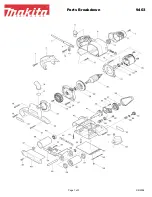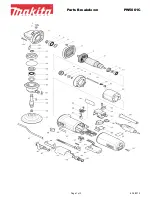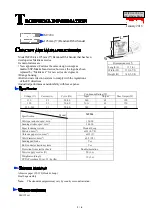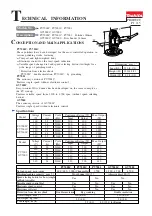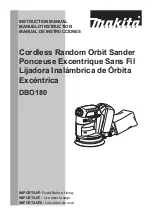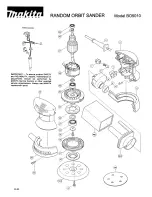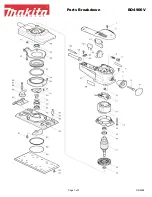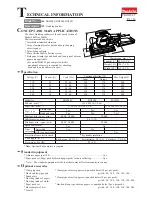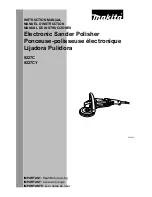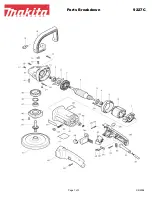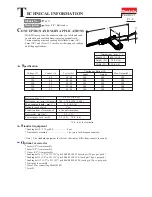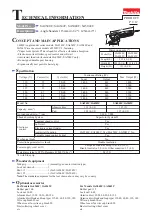
6
Feed with thicker workpiece end at the
front, hollow side downward.
Don’t machine stock that is heavily
twisted, bowed, or otherwise varies in
thickness form end to end.
Workpieces shorter than 60 mm may
not be processed.
Machine max. 2 workpieces at one
time. Feed on both drum ends.
Support long workpieces with helping
roller stands.
Basic operating procedures:
1. Set depth of cut
2. Start drum
3. Start conveyor and select
federate.
4. Start dust collector
5. Feed stock through unit
General warning:
Always keep your fingers well clear
of the rotating sanding drum.
Never place your fingers under the
drum.
Operating notes:
First begin sanding with a coarser grit,
and then progressively work toward
finer grits (see chapter 7.2).
Grits that are too fine may sometimes
burnish the wood (oak, for example is
susceptible due to its open pores).
Angling the workpiece provides the
advantage of more even wear of
abrasive strips, potential faster feed
rates, lighter load on the motors and
less dust build up on the sanding
paper.
Fig 4
Even a slight offset angle of the stock
will provide for more efficient stock
removal.
The optimum feeding angle for stock
removal is about 60°
You will get the best finish however,
when sanding in line with the grain of
the wood on the final one or two
passes.
You get a faster stock removal when
sanding several passes with less
depth of cut at a higher feedrate.
For best results clean the sanding
paper regularly (see chapter 7.3).
Abrasive life can also be increased by
reversing the strip.
Replace worn or torn sanding paper
immediately.
It may take some experimentation to
determine the proper depth of cut,
given the variables of abrasive grit,
type of wood and feed rate.
If a workpiece gets stuck rise the
sanding drum.
In case of overload the motor overload
cut off will pop out. After appr. 2
minutes of cooling down it can be
reset.
Switch machine off if no further
sanding is to be done immediately
afterwards.
7. Setup and adjustments
General note:
Setup and adjustment work may
only be carried out after the
machine is protected against
accidental starting by pulling the
mains plug.
7.1 Wrapping abrasive strips
Disconnect the machine from the
power source (pull mains plug).
Raise the clip lever on the left
(outboard) side of the drum.
Fig 5
Insert the abrasive strip so that it uses
most of the width of the slot and
release the clip lever.
Wrap the strip around the drum, being
careful not to overlap the windings.
Fig 6
Insert the tapered end into the inboard
take-up fastener (Fig7) and release
the clip lever.
Fig 7
The take-up fastener is designed to
automatically take up any slack
caused by stretching of the abrasive
strip.
Note: Position the strip with enough
space to the inside of the slot (Fig8) to
allow it to be pulled into the drum as
needed.
Fig 8
The abrasive strip may stretch in use;
a rising of the take-up lever clamping
position (Fig9) may become
necessary when it contacts the drum
ground.
Fig 9




















